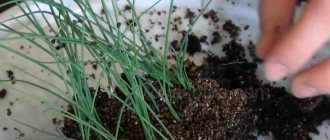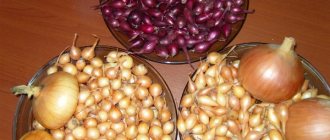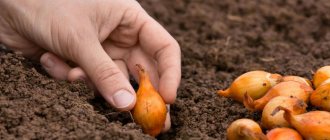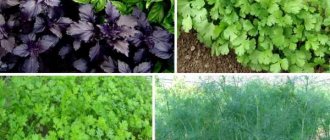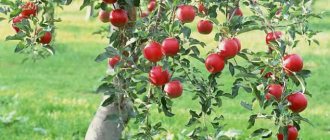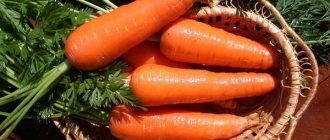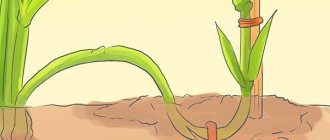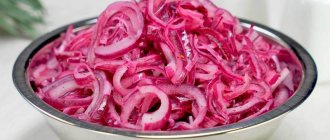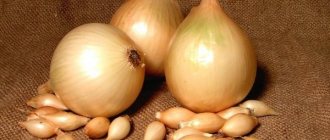Is it possible to plant onions before winter?
This may come as a surprise to novice gardeners, but sowing onions before winter is quite acceptable. Moreover, in regions with relatively mild winters, gardeners regularly sow winter crops.
The main thing is to follow the rules exactly and use special varieties that were bred by breeders specifically for sowing before winter.
The most common method of planting crops in the fall is using sowing. This is the name given to small bulbs, from which a larger bulb then grows.
Features of the lunar calendar
Nature is amazing and perfect, so any action occurs in accordance with cycles and certain rules.
When carrying out gardening work, a person is helped by the forces of nature. Even our ancestors were guided by natural phenomena, which they used for their own purposes.
Nowadays, few people believe in folk superstitions, so some have been completely forgotten. But some gardeners are hesitant to start work until they become familiar with the lunar calendar, because thanks to it you can get a rich harvest.
What varieties of onions are suitable for planting before winter?
Remember that only winter varieties are allowed to be planted before winter. They are prepared to endure sub-zero temperatures and hibernate throughout the winter. Spring varieties of onions are not allowed to be planted.
Onion varieties for the Moscow region
For autumn planting in the capital region, varieties that are zoned for the colder regions of Siberia, the Leningrad region and the Urals are also suitable.
You can also plant Centurion, Bessonovsky, Red Semko, Strigunovsky, Arzamas, Stuttgarter Riesen.
Varieties suitable for Siberia
For sowing in Siberia, it is imperative to use zoned varieties of the crop that are resistant to severe frosts.
For example, Ellan, Swift, Shakespeare, Radar, One Year Siberian, etc.
Onion varieties for the Urals
Such varieties of culture as Shakespeare, Radar, Ellan, Sturon, Senshui, Red Baron are suitable for the Urals.
Planting onions in the Leningrad region
We recommend reading our other articles
- Duck Blue Favorite
- Stanley plum: variety benefits
- Carrot Abaco F1
- Wintering of bees
The time for planting onions before winter in the Leningrad region falls on the first ten days of October. The best varieties for this region are those that are zoned in this area. The landing process is no different from what is described above. However, mulching in this area is mandatory.
It is usually carried out in winter. The bed is covered with 5 cm of compost or similar material. It is not recommended to use peat - in the Leningrad region there is high humidity, and peat absorbs moisture.
Important!
If the winter turns out to be snowless, it is worth mulching the bed on top with a layer of peat or compost leaves. You can do this throughout the winter, the main thing is just to make sure that there is a layer above the bed that protects the soil and the onions in it from freezing.
Our readers recommend reading : how to grow spring onions, rules for planting onions on turnips, the best varieties of onions with a description.
When to plant onions before winter in 2021 according to the lunar calendar
The phase of the waxing moon, that is, the days from the new moon to the full moon, is considered a favorable time for sowing onions. Experienced summer residents who specialize in biodynamic farming believe that it is at this time that planting material takes root best.
But the full moon and new moon are considered unfavorable days.
Favorable days for autumn planting onions
In 2021, before winter, onions are planted on September 1, 18, 19, 20, 21, 22, 23, 24, 25, 26, 27, 28, 29, 30; October 1, 17, 18, 19, 20, 21, 22, 23, 24, 25, 26, 27, 28, 29, 30, 31; November 16, 17, 18, 19, 20, 21, 22, 23, 24, 25, 26, 27, 28, 29.
Unfavorable days
In the fall of 2021, onions are not planted on September 2, 17, October 2, 16, 31, November 15, 30.
Winter onion varieties
Thanks to breeders, today you can choose the most suitable varieties from the many that are on the market. The following varieties are recognized as the most successful for planting before winter: Strigunovsky, Bessonovsky, Stuttgarter Riesen, Ellan. They are resistant to bolting, early ripening and can easily withstand severe frosty winters in the ground.
Stuttgarter Riesen is famous for its taste and size
If it so happens that it was not possible to obtain such planting material, then you can choose any zoned variety.
Black onion
Black onion is the name given to the seeds of any type of onion. This plant is classified as a three-year crop, since in the first year the seeds grow to the state of a set, and in the second they produce a large head, and only in the third year do seeds called nigella appear. Planting small black seeds to produce onion sets or simply growing for greens during winter sowing.
Onion on turnip
Onions are obtained by planting sets with a diameter of 1.5 to 3 cm. Such onions are obtained in the second year after sowing the seeds. It is valuable for its taste and healing properties. Onions are divided into sharp, semi-sharp and sweet varieties. Although the latter are considered the most delicious, especially when preparing various salads, they are poorly stored in winter. Spicy varieties of onions are preserved best during the cold period.
Onions come not only yellow, but also in other colors
Onion
Onions are very similar in appearance to regular onions, but they are grown for greens, since they do not form turnips. Instead of a head, the trumpet grows a thickening near the roots - a false bulb. The leaves grow up to 40 cm, and in one place such onions grow continuously for up to 10 years.
Onion is extremely tasty
Shallot
Shallot
This plant is often called the “family onion”; its somewhat long bulbs weighing up to 50 g are collected in nests. This plant is loved for its thin and delicate feathers. This onion dries well. Other advantages include good winter storage.
Other varieties of onions
There are so many interesting shapes and names of onions, and some have never been on many people’s tables. These are multi-tiered, branched, bear onions, slime onions, chives. The following can be said about multi-tiered onions: they are a very unpretentious and frost-resistant plant. Even young greenery is not afraid of frosts.
This onion is good for forcing in winter. Reproduction of multi-tiered onions occurs either with the help of seed bulbs or daughter onions. The plant got its name for its original feature: sprouts appear from the bulbs, thus another seed develops on the mother bush, right on the main plant.
Multi-tiered bow looks very interesting
Branched onion , or jusai, or fragrant, came to us from the Mongolian steppes and Chinese vegetable gardens. It is widespread in Asia, southern Siberia and the Far East. This plant is easy to care for and very frost-resistant. Reproduction is carried out using seeds.
Branched onions taste like garlic
Leeks are called pearl leeks. This guest of our gardens came from the Mediterranean and still grows in nature in Asia, Africa and southern Europe. Its long leaves look like a lancet, and are located on the stem like garlic. The tender false onion is eaten. Leeks are planted by seeds before winter.
Leeks are piled high to increase the edible bottom part
Chives are unpretentious and grow without loss of quality in one place for 3-4 years. Feathers emerge from the ground very early and are not afraid of frost down to -4°C. This plant is good to grow at home for greenery. Delicate feathers are used for food. This onion is considered a medicinal plant, as it contains a lot of useful substances.
Chives can also be grown as an ornamental plant.
How to choose time depending on region
The planting time in different climatic zones of our country varies depending on weather conditions in autumn and winter.
Let's consider where and when to plant crops before winter.
Middle Strip
Usually in the Middle Zone, the time for sowing onions in the fall occurs in the second or third ten days of October. In years with a long warm autumn, sowing can be shifted closer to November. But you still shouldn’t delay it too much. In the last month of autumn, the weather may deteriorate sharply, then the seed will not be able to take root.
Ural
In this region, sowing is carried out before the beginning of the third decade of October. Winters come earlier here than in the Middle Zone, so you shouldn’t wait until the last days of October. Indeed, in this case, the onions will not be able to take root and will not produce a harvest.
Siberia
In Siberia, onions are usually not planted in the fall due to the severity of the climate and low winter temperatures. But, for example, in 2021 the autumn turned out to be very warm, so the seedlings can be sown until mid-October.
Choosing a variety for planting in autumn
Not every onion variety is suitable for winter planting.
Did you know? Onions are the most sought after plant product on the planet.
It is cultivated in no less than 175 countries, and it is used in absolutely all famous cuisines of the world. Most often, onion varieties are planted before winter, represented by:
- Ruby , which is a productive early-ripening vegetable that ripens within 80 days;
- Mouzona , characterized by mid-early ripening within 90–110 days;
- Robin , distinguished by the red color of its flesh and is a hybrid intended for winter cultivation in the southern regions;
- Siberian early ripening , in which the growing season lasts no more than 70 days;
- Lugansk , belonging to late-ripening varieties and characterized by good keeping quality, pungent taste and high yield;
- Buran , which is a universal variety with good keeping quality;
- Tamara F1 , which is a mid-early hybrid with high taste and high yield;
- Black Prince , which has a dark purple color and is characterized by high keeping quality;
- Panther F1 , characterized by increased cold resistance and resistance to shooting.
What are the features of autumn planting onions?
Planting onions at this time of year has some features that need to be taken into account.
Onion sets are planted in advance so that before frost arrives, the bulbs can take root and gain strength before winter.
Chernushka can be sown even in already frozen and snow-covered ground in the last ten days of autumn. The only thing is that it is better to prepare the grooves in advance. After sowing, the bed must be mulched.
In general, the area for sowing crops is prepared much in advance. Also, the bed is usually slightly raised so that melt water does not accumulate there, which can cause rotting of the planting material planted in the soil.
Preparing onions for planting
Onions, like most other vegetable crops, require pre-planting treatment. Thanks to this, in the process of growth and fruiting, both productivity and resistance to various diseases increase.
Processing involves sorting and removing bare, dried, diseased and even cut bulbs. It is also recommended to warm up the planting material 2-3 days before planting, which can be done by laying out the bulbs near a heating device.
Preparation for planting also involves feeding the bulbs, and after planting, protecting them from fungal diseases.
Many summer residents treat it with a saline solution before planting, and therefore the planting material can be disinfected from nematodes. To prepare such a solution, add 3 cups of salt to a bucket of water, mix well, then soak the onion in this solution for 2 days.
And thanks to the following processing method, we simultaneously perform the tasks of providing nutrition and protecting the bulbs. To do this we will need to perform the following steps:
- First, we place the planting material for 10 hours in a nutrient solution, for the preparation of which any complex fertilizer can be suitable.
- Then immerse in a solution of copper sulfate (dilute 1 tsp of copper sulfate in 10 liters of water).
- After completing these procedures, rinse the bulbs with warm water.
How to prepare a bed for planting onions
The success of the event is directly dependent on the quality of soil preparation in the future garden bed.
By autumn, the soil becomes depleted after the spring-summer season, so to plant onions in the fall, you need to add fertilizer to the soil, which will nourish the onions all winter.
Preparation of the bed begins approximately 20-30 days before sowing. This is done so that the introduced organic matter has time to decompose and release nutrients.
The first thing to do is dig up the soil to a depth of 20-30 cm (at the bayonet of a shovel), simultaneously breaking up large clods. Then the soil is harrowed and weeds, roots and other debris are removed.
IMPORTANT! The soil must be perfectly clean before planting in the fall!
Next, fertilizers are applied. Usually a mixture of organic and mineral components is used. Thus, the soil is saturated to the maximum.
For every square meter of future onion bed, add 5 kg of humus, 10 grams of potassium salt and 20 grams of superphosphate.
Humus can be replaced with compost or rotted mullein. The volume is the same.
REFERENCE. Immediately before planting, scatter wood ashes over the garden bed. You will need 10 grams of ash per square meter.
How to grow onion sets from seeds yourself
You can grow your own sets from nigella seeds. Prepare the bed for sowing in the fall: dig up to a depth of about 20 cm, apply mineral fertilizers, humus and chalk. In early spring, rake to a depth of 10 cm. Make transverse rows 2 cm deep in the bed at a distance of 15 cm from each other.
Before planting, soak the seeds in warm water for 2-3 days. Change the water every day. Then dry and plant the seeds in the prepared grooves to a depth of 1.5-2 cm, sprinkle with earth and compact slightly. Water the garden bed and cover it with film until the first shoots appear.
As they grow, thin out the rows so that there is 3-4 cm between plants. In mid-summer, you can stop watering. Wait until the leaves have lodged, pull out the bulbs and dry first in the sun and then under a canopy. The seedlings are ready for planting next season.
How to prepare planting material
Before planting, all planting material must be sorted. Divide all the onions into three piles.
First, put the smallest ones, which are less than 10 mm in diameter. This is oatmeal.
Onions from 10 to 30 mm are placed in the second pile. This is a set.
And finally, the largest onions are placed in the third pile. This is a sample.
REFERENCE. The wild oats and sets are planted on the turnip, and the selection is planted on the feather.
After sorting, planting material must be treated to prevent the development of fungal diseases.
After calibration, the planting material can be etched.
To do this, prepare a fungicide solution (Maxim, Topaz) according to the instructions. Soak the seedlings in the solution for half an hour. Then the bulbs are dried.
Instead of a solution of a store-bought fungicide, you can use a weak solution of potassium permanganate.
IMPORTANT! Do not soak the bulbs before winter planting.
How to care for onions in open ground
Winter onions require virtually no maintenance. Don’t rush to cover it too early, otherwise it might hide. With the onset of light frosts, mulch the bed with fallen leaves, spruce branches or other materials. In winter, add more snow - this is the best protection against freezing.
In summer, care consists of watering, weeding, fertilizing and pest control. Loosening is carried out as needed or after watering and rain. Loosening destroys the crust on the soil surface and opens oxygen to the roots. Also, with the help of loosening, weeds are eliminated. I would like to remind you that the root system of onions is very weak, and it cannot fight weeds on its own.
Onions love watering. But in everything you need to know when to stop. The soil should be well moistened, but without stagnant water, otherwise this is a direct path to fungal diseases. In rainy weather, stop watering; in dry weather, water at least twice a week.
Around mid-July, onions stop forming turnips and begin to accumulate various nutrients and sucrose. From this moment onion watering is reduced. And about three weeks before harvest, watering is stopped altogether, even if the weather is dry. This will increase the keeping quality of the onion.
We should also talk about watering during autumn planting. It is carried out only for faster rooting of seedlings before frost in the event of a dry autumn. In all other cases, no watering is carried out in the fall.
If the onions begin to form arrows, and your plans do not include collecting seeds, you need to get rid of them. But they need to be broken off at a certain point in time, when a thickening head appears on the arrow.
The arrow is carefully cut off at the bottom above the leaves. If you tear off just the top, the arrow will grow back.
Onion feeding
There are many recommendations on the Internet for applying fertilizers and other chemicals. Friends, isn’t it easier in this case to buy onions in the store? All this will be present there. But we grow onions for our loved ones, let’s not forget about it.
The optimal fertilizer would be to mulch the beds with onions with rotted compost. Mulch will prevent weeds from growing and will nourish the growing onions.
And once a week, water with infusion of dry vermicompost: mix 1 glass of vermicompost with 10 liters of water and let it brew for 1 day. Watering with this infusion increases the yield by up to 30%.
How to treat onions against pests in open ground
There are two worst pests on onions: the main one is the onion fly. It usually appears at the moment the bird cherry and cherry trees begin to bloom. The second invasion often occurs in mid-July. The first sign of a fly is dry feather tips and a depressed appearance.
The most environmentally friendly and effective way to get rid of flies is by watering with a solution of birch tar.
It is prepared simply: 1 tablespoon of tar per 10 liters of water. Water both at the roots and along the leaves. The fly cannot stand the smell of birch tar. You can purchase it at any pharmacy or pet store.
The second, no less dangerous pest is the secretive proboscis (weevil). The main method of combating it is loosening the row spacing to prevent pupation of the larvae, which occurs at a depth of 5-10 cm.
I would like to offer you a video in which you will see how else you can fight onion pests.
Planting winter onions step by step, diagrams and technologies
Now it’s time to figure out the agricultural technology for planting onions. The crop can be planted with bulbs (sets) or seeds. Let's consider both options step by step in as much detail as possible.
Planting bulbs
Step 1. In the prepared area, make grooves 5-8 cm deep (depending on the size of the bulbs). The distance is maintained at 20 cm.
Step 2. The bulbs, pressing lightly, are laid out in grooves with a step of 5-8 cm between them.
Step 3. The plantings are covered with earth and lightly compacted so that there are no voids left in the soil.
Step 4. If it has not rained for a week and a half, then moderate watering is carried out.
Step 5. The bed is mulched and covered with branches, leaves and grass.
How to sow onions correctly in the fall
As mentioned above, in the fall you can not only plant onions, but also sow nigella.
An important feature of autumn sowing is that it is carried out exclusively on frozen ground. It is allowed to sow even on the first snow.
This is done so that the nigella does not have time to sprout sprouts that will not survive in the cold. Onion seeds should germinate only in the spring.
The furrows for sowing are prepared in advance, as this is much more convenient than digging through the frozen ground.
They sow quite often, because part of the seed will die. If there are a lot of seedlings, they are simply thinned out in the spring.
After sowing, the furrows are covered with soil and covered with pre-prepared covering material.
Landing technology
The productivity of winter crops depends both on the correctly selected variety and on agricultural technology. The soil must be fertile enough for the bulbs to take root. Soil poor in nutrients will not allow the plant root system to form, and the crop will die.
Crop rotation
Proper crop rotation will allow you to get a bountiful harvest and protect the soil from pests and diseases. Properly selected precursors will maintain a certain acidity of the soil.
Onions are planted after:
- cucumbers;
- legumes: peas, beans;
- rapeseed;
- beets;
- mustard;
- pumpkins;
- zucchini;
- tomatoes.
Bad predecessors: spring onions, any types of garlic, radishes, rutabaga, cabbage, celery, carrots, parsley, parsnips. These crops greatly deplete the soil, especially of nitrogen and phosphorus, which are necessary for the formation of the root system and leaves.
Important! After potatoes, alfalfa, and clover, there is a high risk of infection with nematodes.
Preparing the bed
Choose a site that is protected from the winds, well-lit, where in the spring the snow quickly melts and the melt water does not stagnate. The soil should be loose with a neutral acid-base balance. After harvesting the predecessor crop, the soil is enriched with mineral and organic fertilizers, preferably at the time of the first digging.
For this use:
- humus or compost (one bucket per 1 m2 of soil);
- superphosphate (2 tbsp per 1 m2) or wood ash (100 g per 1 m2);
- urea (1 tbsp per 1 m2).
It is pointless to add pure manure, since it will rot only in the spring and cause organic burns to the crops.
Ground chalk or lime is additionally added to acidic soil to alkalize it.
Before sowing, all remnants of other crops and weeds are removed from the beds: the larvae and pupae of harmful insects remain on them. The area is disinfected with a solution of copper sulfate.
The soil is dug up to a depth of at least 20–25 cm and left unleveled to ensure air flow. On such soil, various pests quickly die under the influence of low temperatures.
Preparing the bulbs
To obtain a good harvest, the seed material is sorted. Soft, damaged, dried specimens with signs of disease are rejected. Not only will they not germinate, but they will provoke the appearance of diseases.
Bulbs are calibrated by size:
- wild oatmeal - up to 1 cm;
- sevok - 1-2 cm;
- samples - more than 3 cm.
Sets are more suitable for spring planting. Before winter, wild oats are used: they grow more slowly, but take root faster. Large specimens are planted only to obtain early greenery.
Two weeks before being buried in the beds, selected and calibrated onions are laid out in one layer in a well-lit and warmed place. This will allow the root system to form faster, increase the survival rate and resistance of the crop to adverse weather conditions both in autumn and spring.
Important! When planting in winter, the feathers of vegetables are not trimmed.
The seed material is disinfected in one of the following products:
- saline solution (1 tbsp table salt per 1 liter of boiled water at room temperature) - 5 minutes;
- copper sulfate (1 tbsp per 1 liter of boiled water) - 5 minutes;
- weak pink solution of potassium permanganate - 3-5 minutes.
The processed bulbs are laid out on gauze, paper or cotton cloth and dried for one day. Disinfected material is planted as soon as possible to avoid reintroducing pathogens.
Experienced vegetable growers additionally treat wild oatmeal with antifungal drugs (for example, Fitosporin-M).
Advantages and disadvantages of autumn planting
Now is the time to talk about the advantages and disadvantages of planting onions in the fall.
First of all, let's discuss the advantages of this procedure.
- Winter varieties ripen several weeks earlier than spring varieties. This allows you not only to get an early harvest, but also to use the vacated area for other plantings.
- Planting wild oats prevents bolting.
- Planting before winter is favorable because the parasites go into hibernation.
- Autumn planting reduces the likelihood of plants becoming infected with gray rot and powdery mildew.
- Winter onions sprout early even before the weeds.
- Onions that are planted in the fall show higher yields. The bulbs are larger and tastier.
- The bulbs receive moisture naturally from melted snow.
Now a few words about the disadvantages of sowing onions before winter.
- There is a possibility of making a mistake with planting dates due to changeable weather in the fall.
- The beds must be hidden under cover.
- The number of planted bulbs should be at least 15% more than in the spring, since some of the planting material will certainly die.
- Winter varieties are stored worse than spring varieties.
Caring for onions after planting in the fall
It will be useful to cover onion beds planted in winter with insulating material to prevent freezing. This is especially true for areas with harsh and frosty winters. Suitable insulation materials:
- straw;
- sawdust;
- dried tops of tomatoes, potatoes, peppers;
- peat.
In winter, snow should be shoveled onto the onion bed. It will protect the plantings from strong winds and frosts.
What to do in early spring?
In the spring, as soon as the snow melts, it is necessary to remove all materials that were used as a shelter. This work should be carried out carefully to avoid damage to the delicate young onion feathers, which may have already sprouted.
Then you need to loosen the soil and carry out this work after each watering or rain.
When will winter onion shoots appear?
If weather conditions are favorable, the first shoots of onions planted before winter will appear in late March. Thanks to such early shoots, it becomes possible to harvest a month earlier.
Care measures
Caring for onion beds is not difficult. To do this, it is enough to familiarize yourself with the nuances of plant development and carry out agrotechnical measures in a timely manner.
Emergence of seedlings
To create conditions for friendly shoots, after the snow melts, it is necessary to immediately remove the cover from the beds so that the plantings are illuminated as much as possible by sunlight.
Loosening and thinning
After each rain and watering, the soil is loosened, simultaneously removing weeds. If the plantings are too dense, then thinning is recommended in the 4-leaf phase.
Onion feeding
The first fertilizing of the crop in the spring is carried out immediately after removing the covering material. For this, wood ash is used, which is added at the rate of 10 g per square meter.
The second, full-fledged feeding, is carried out in the 4-leaf phase, when the formation of the bulb begins. This time you need to apply one of two fertilizers:
- azofoska – 25 g per square meter;
- chicken manure solution.
Watering
If there was a lot of snow in winter and precipitation in the spring, then the crops are rarely watered. If the weather is hot and without precipitation, watering is carried out weekly.
Protection from diseases and pests
Onions have a lot of pests and diseases that can have harmful effects during the growing season. The most dangerous of them are the following:
- Onion fly. This is one of the most common pests that parasitize onions. At the first signs of damage, you need to treat the onion plantings with one of the recommended insecticides. Otherwise, this pest can cause great damage to the bulb crop.
- Tobacco onion thrips. The pest is omnivorous and can also attack onions.
- Cervical rot. A widespread disease that spreads with infected planting material. Usually the disease progresses just before the bulbs are harvested. To prevent this, it is recommended to carefully select onion sets intended for planting. If the slightest suspicion is detected, the planting material should be rejected.
- Downy mildew (downy mildew). A very dangerous fungal disease that develops quickly in wet and cool spring. The disease can affect onions at any stage of its development and lead to the loss of the entire crop. To prevent the spread of the disease, onion plantations, when the first signs of the disease are detected, are treated with a fungicidal solution. The rates and doses are indicated in the instructions for use of the drug. Repeated treatment may be necessary to completely eradicate the pathogen.
Advice! If you planted winter onions densely, then in the spring, during the thinning process, you can pull out excess bulbs for greenery, and also get rid of weak and bolting specimens. After thinning, there should be an interval of 10 cm between the bulbs.
Harvest
Usually in July (even in the first half) you can start harvesting the bulbs. To do this, choose a warm, sunny day, without precipitation. The bulbs pulled out of the ground are left for several hours in the sun to dry. After which the onions are sorted into fractions and sent for storage.
More information about when and how to properly store onions.
Autumn planting of onions deserves special attention, since it has a number of advantages compared to spring. It is only necessary, in accordance with the recommendations, to correctly prepare the planting material, arrange the beds, apply fertilizers and choose the correct planting date.
All these operations, as well as post-planting onion care, are not very difficult. Now you know everything about planting onions before winter and planting dates. Carry out all measures to care for the crop in a timely manner and the harvest of bulbs will definitely please you.
Anastasia Kalashnikova A passionate gardener and florist. I especially love growing beauty on the windowsill. ...
Common mistakes
- Too much watering after planting. This leads to fungal infection and the development of rot.
- Lack of moisture after autumn planting. It is also impossible to leave the sets without water. The planting material will dry out.
- Use fertilizers when planting, not when preparing the bed. Because of this, the onion produces feathers, which is completely unnecessary before winter.
- The bed is not loosened. The bulb remains without oxygen and freezes in development.
- Choosing the wrong variety. In order to get a harvest and not ruin your seedlings, you need to select the right zoned winter varieties that are intended for planting specifically in your region.
- Error with the selection of the landing date. Sowing must be done so that the bulbs have time to take root, but do not have time to release the feather.
- Onions are not planted upside down. It's a stupid mistake, but it happens too. The bulb is planted bottom down and lightly pressed down for better contact with the soil.
Successful periods for planting
The crop is grown both for feathers and for the purpose of producing turnips. To do this, you need to plant small bulbs (sets) or seeds. The second planting option involves sowing the plant directly into the ground; you can also sow it in separate containers for seedlings.
Onions are a strong crop; the seeds can withstand from +1 to +5 °C, but the seedlings of some varieties are considered frost-resistant. These varieties can withstand night frosts down to -3 °C. However, during prolonged frosts, plants may die. Therefore, the best time for planting is the end of September.
Answers to frequently asked questions
What is better to plant onions in the fall, sets or nigella?
Sets are planted to produce onions, and nigella is sown to produce onions.
Do I need to soak the bulbs before planting?
It is better not to soak the bulbs before autumn sowing. They can be pickled in a fungicide solution for 20-30 minutes, but then be sure to dry them.
At what depth are seedlings planted?
About 5-8 cm depending on the size of the planting material.
What fertilizers should be used?
There is no need to feed anything when planting. Fertilizers are applied at the stage of preparing the beds.
When is nigella sown?
Onion seeds are sown in frozen soil when the temperature finally reaches sub-zero temperatures.
What is “nigella” and how to plant it
Seeds obtained from bulblets (umbrellas) on peduncles (arrows) are called nigella. For independent cultivation of nigella, the largest heads (a few pieces are enough) with pronounced characteristics of the variety are selected. In early spring or late autumn, plant onions in a dry and sunny place and cover with mulch. In mid-summer, flower stalks with umbrellas consisting of small black seeds appear. The bulbs are covered with gauze, wait for ripening and collect the seeds. But such feats are needed when the variety is rare and its seeds cannot be purchased.
You can grow the material for planting onions yourself
The umbrellas of ordinary onions are collected and dried in the shade or indoors for 2-3 weeks. The main problem is that the quality of the seeds is quickly lost. Within a year, regardless of the planting depth, only half of the collected material will sprout, and later even less.
To avoid such troubles, you can buy seeds, but be sure to check the material for germination and disinfect it. Suitable for disinfection:
- weak (pink) solution of manganese (0.5 hours);
- infusion of ash (1 tbsp per 1 liter of water), incubated for about 4 hours.
The nigella is placed in a bag and immersed in the solution. Then they are germinated (wet cloth, temperature 22°C). If the soil is sufficiently moist, then the germination process can be omitted, however, there is a danger that in this case the germination will be a little later.
Planting onions with seeds is possible in autumn and spring. It is quite difficult to plant such small grains, so it is recommended to stick the seeds on a strip of thin paper in increments of 5-7 cm. This will make the work easier and avoid wasting time on thinning. The depth is calculated so that 1-2 cm remains to the soil surface.
Before planting onion seeds, the soil is fertilized with superphosphate and calcium chloride (20-30 g per sq. m). Before you start planting for the winter, add another 50-60 g per square meter. m of nitrophoska and 20 g of urea and superphosphate, you can add another 5-10 g of calcium sulfate or purchase a ready-made set of chemicals. Experts do not recommend fertilizing the beds with manure both in spring and autumn, since as a result the plant produces a large mass of greenery, but a loose head, unsuitable for long-term storage.
You can plant the seeds in rows (20 cm x 5 cm) or sow scattered. In the second case, the sowing will be a little smaller, but the planting space will be saved. The depth is determined taking into account the fact that after planting the bed is slightly rolled down from above. In spring, the bed with seeds is regularly moistened and, if necessary, carefully loosened. After emergence:
- to obtain annual onions, the plants are thinned out first by 2 cm, and after 20 days by 6 cm;
- to obtain seedlings, the density of the seedlings is left a little denser so that the result does not turn out too large.
20 days before harvesting, stop watering, wait for the tops to die down, and harvest.
Landing dates
The time for autumn planting of winter onions varies greatly depending on the climatic conditions of a particular region. To establish the exact time for planting planting material, they are guided by the rule that the vegetable should be planted 30–35 days before the onset of constant cold weather. Experienced vegetable growers, monitoring the outside temperature, begin planting sets when the thermometer records a temperature of no higher than +5ºC for several days in a row.
Most often, the planting time for this vegetable falls within the time frame between mid-October and early November. There is no point in planting onions after the onset of stable frosts - they will certainly die.
Important! The main rule that must be followed when planting onions in the winter requires choosing a time for planting this vegetable so that it has time to grow a root system before the onset of persistent cold weather, but does not begin to produce green sprouts.
When planting this vegetable, some gardeners are guided by the lunar calendar. According to his data, in the fall of 2021, it is best to plant onions on October 1–3, 10, 11, 29 and 30, and this should not be done on October 7–9, 14, 27 and 28.
The best varieties of onion sets
Breeders have developed many varieties of onions. It is advisable to choose seedings of zoned varieties - they take root better in specific climatic growing conditions. Below are the most popular onion varieties for growing from sets.
Orion
An early maturing hybrid bred by English breeders. The bulbs are round and weigh about 180 g. The good thing about this variety is that it can be stored for a long time without loss of quality.
Sturon
An early ripening variety, characterized by good germination, high yield, immunity to various infectious pathologies, and the ability for long-term storage. The bulb of the Sturon variety weighs 100-160 g. The taste is pleasant, moderately spicy.
shallot
Elite variety. Onion pulp is juicy, mild in taste, does not cause watery eyes when cut, is suitable for various culinary purposes, and is rich in vitamins, minerals, and bioactive substances.
Stardust
Mid-season onion with white skin. It is distinguished by the friendly emergence of seedlings and good preservation of the crop.
Stuttgarter Riesen
Early ripening onion. Productivity is consistently high. Shelf life without loss of quality is long. The bulbs are heterogeneous in weight: the smallest weigh 50 g, the largest - 300 g. The only negative is the plant’s susceptibility to downy mildew and rot.
Centurion
A variety of the Stuttgarter Riesen variety, distinguished by slightly oblong bulbs, bred to produce bulbous, but not green mass. When creating optimal conditions, germination is 100%. Arrows are almost not formed. Susceptibility to diseases is low. Long-term storage (up to 9 months). The taste is quite sharp and spicy.
Red Baron
Onions of rich red color with high nutritional qualities. The taste is pleasant, medium spicy, pronounced aroma. The plant is capricious: it quickly withers without weeding and regular watering.
Exhibition
A variety with large sweet bulbs weighing up to 800 g. The bulb reaches its maximum size by 4 months. Shelf life is average (up to 4 months).
Kaba
Late ripening onions. A teardrop-shaped bulb with greenish-white flesh, yellow or beige husk. The plant is susceptible to fungal infection and onion fly damage.
Harvest and storage
The harvest is harvested when the leaf stems begin to turn yellow and fall off. The bulbs are dug up, cleared of soil, and placed to dry in the sun for 2 hours. Then move it to the shade and leave until the leaf mass dries. From it, bioactive substances pass into the onion pulp. The harvested crop is sorted.
For the most part, wild oats are not stored until spring; they dry out. Therefore, they are usually planted before winter. The first variety is selected for spring or autumn planting for bulbs and herbs. The second variety and selections are planted in the spring to produce greenery.
Store the sets in a cool room, but not at sub-zero temperatures. The optimal temperature is slightly above 0 degrees, relative humidity is 75%, in this case the bulb will remain dormant all winter. This could be a well-ventilated cellar. City dwellers store small volumes of sets in the refrigerator in the compartment for vegetables and fruits.
This video describes the collection and storage of onion sets:
Growing onions from sets is not difficult. The culture is not capricious, so many gardeners do not even think about observing planting rules and do not devote much time to caring for seedlings. However, by following agrotechnical rules, you can significantly increase the yield of onions, and ignoring them can lead to the loss of a large part of the harvest.
0
0
Copy link
